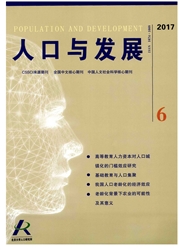

 中文摘要:
中文摘要:
基于2011年中国31个省域截面数据,应用空间计量模型分析人力资本对碳排放密度的影响。我国省域间碳排放密度存在着显著的空间相关性,即一个地区的碳排放密度受相邻地区碳排放行为的影响。采用不同指标测度出的不同类型的人力资本对地区碳排放密度的影响作用不同:基于教育年限法衡量的通用性人力资本对碳排放密度影响系数显著为正,即现阶段教育水平较高的地区碳排放密度也较大;以R&D人员为代表的异质性人力资本与碳排放密度之间存在弱负相关关系,但未通过显著性检验,表明异质性人力资本水平的提升对该地区减少碳排放的影响力度有限,也难以对相邻地区的碳减排产生正的溢出效应。
 英文摘要:
英文摘要:
In this paper we used spatial econometric model to analyze the human capital influ- ence on the carbon emission density based on cross - section data of China's 31 province in 2011. Our results show that Chinag provincial carbon emission density exists significant spatial correlation, which means that the carbon emission density of one region is influenced by the carbon emissions of adjacent region. Further study shows that different types of human capital that measured with different indicatorshave different influence on regional carbon emission density: the influence coefficient of general human capital which is measured based on the commonality of education lifeoncarbon emission density is significantly positive,which means that the density of carbon emissions in the high level education region is biggerand there is a weak negative cor- relation relationship between carbon emission density and heterogeneous human capital which is represented by R&D personnel, but it does not pass the significance testing, which means that the promotion of the level of heterogeneous human capital has limited impact on carbon emis- sions in the region and will not have overflow effects on the carbon emissions of adjacent areas.
 同期刊论文项目
同期刊论文项目
 同项目期刊论文
同项目期刊论文
 期刊信息
期刊信息
